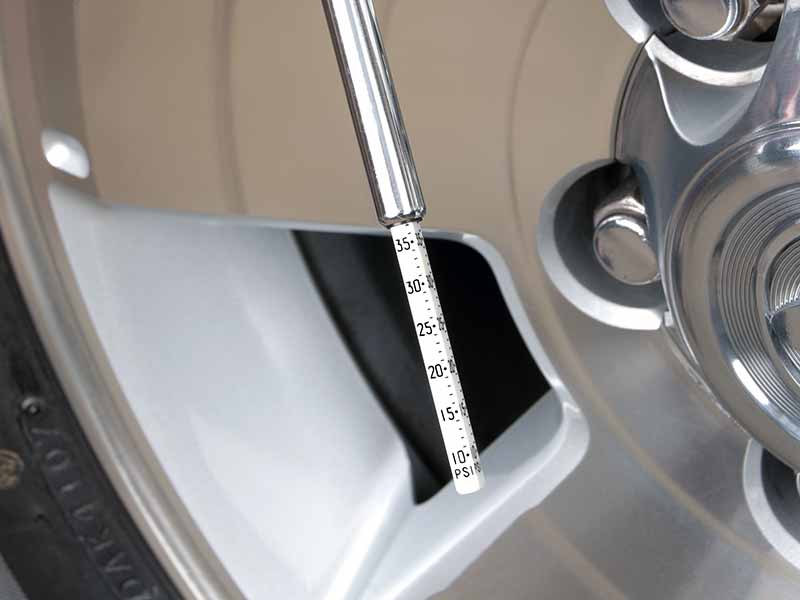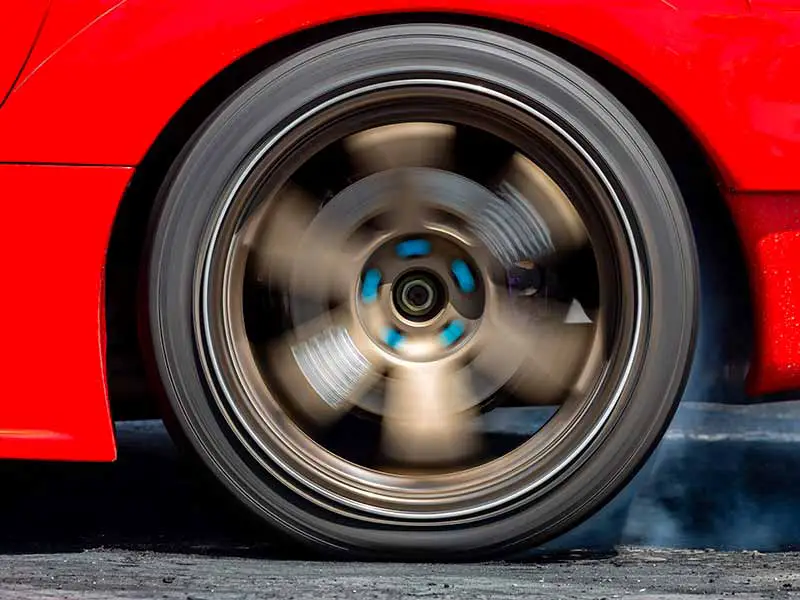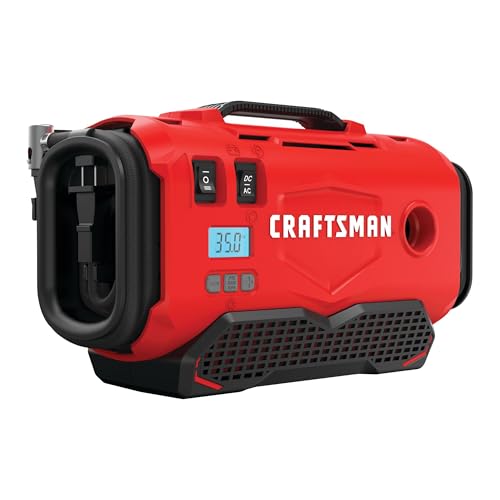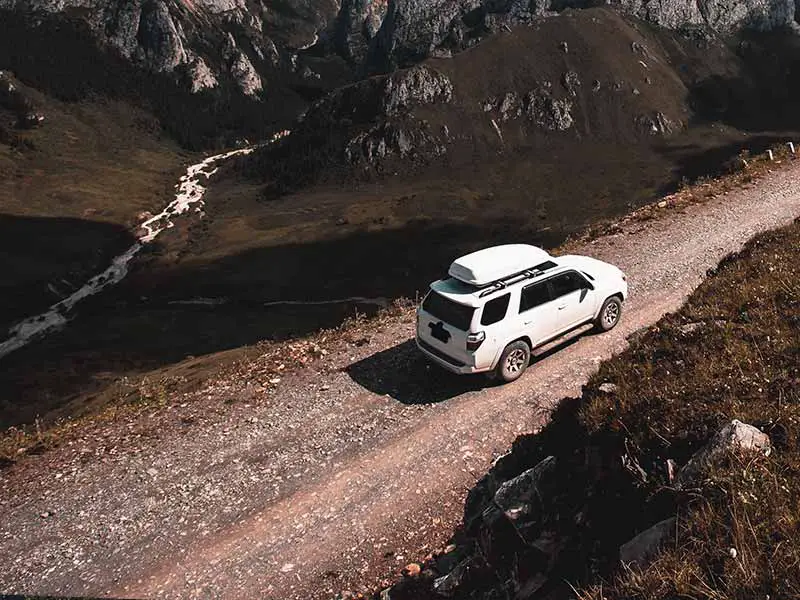If you’ve ever driven up a mountain or through a high-altitude area, you may have noticed changes in your vehicle’s performance, including changes in air pressure. But have you ever wondered how this happens?
How Does Altitude Affect Tire Pressure
Altitude affects the pressure in your tires by increasing it by approximately 1 psi every 2,000 feet of increased elevation. Except for more extreme circumstances, the amount of pressure change shouldn’t be significant enough to be a serious concern alone. However, other factors, such as temperature change, may cause the difference to be more significant.
In this article, we will examine how altitude affects tire pressure and what you need to know to keep your vehicle running safely and smoothly in higher altitude areas. Whether you’re planning a mountain road trip or simply live in a high-altitude location, understanding the relationship between elevation and pressure can help you stay safe and avoid potential issues on the road.
Let’s take a closer look.
Tire Pressure Altitude Calculator
Input tire pressure, current altitude, and destination altitude to determine the tire pressure change when traveling to the destination.
Relationship Between Elevation And Tire Pressure
The higher up you go in elevation, the lower the ambient atmospheric pressure becomes. This is because there is less air above you exerting downward force. In fact, for every 1,000 feet you ascend, atmospheric pressure decreases by about 1 inch of mercury (or about 3.5 millibars).
Now, you might be wondering, “What does this have to do with tires?” Well, atmospheric pressure plays a crucial role in tire pressure. The pressure in your tires is measured in pounds per square inch (PSI), which is the force exerted on the tire per unit area. As atmospheric pressure decreases with elevation, the air molecules inside your tires will also expand, causing an increase in tire pressure.

If you’re planning a trip to a high-elevation location, or any long drive, it’s important to check your tires’ pressure before you go and make any necessary adjustments. You can usually find the recommended pressures for your car or truck on the driver’s side door jamb or in your owner’s manual.
It’s also worth noting that tire pressure can fluctuate depending on the ambient temperature, so it’s a good idea to check your tires regularly, especially if you’re driving in extreme temperatures or altitudes. Over-inflation or under-inflation can lead to reduced fuel efficiency, poor handling, and even tire damage or failure in extreme circumstances, so it’s always better to be safe than sorry!
How Much Does Tire Pressure Change With Altitude?
The short answer is that tire pressure does change with elevation, but the amount of change can vary depending on a few factors. The exact amount of change will depend on factors like the altitude you’re at, the temperature outside, and the type of tire you have.
On average, pressure in your tires can increase by about .5 PSI for every 1,000 feet in elevation gained. So, if you’re driving from sea level to a mountain pass that’s 5,000 feet above sea level, you might need to let out around 2.5 PSI of air from your tires to maintain the recommended amount. It’s important to note, however, that this is just an estimate, and the exact difference can vary.
| Elevation | Tire Pressure |
|---|---|
| 0 ft (Sea Level) | 32 psi |
| 1,000 ft | 32.5 psi |
| 2,000 ft | 33 psi |
| 3,000 ft | 33.5 psi |
| 4,000 ft | 34 psi |
| 5,000 ft | 34.5 psi |
| 6,000 ft | 35 psi |
| 7,000 ft | 35.5 psi |
| 8,000 ft | 36 psi |
| 9,000 ft | 36.5 psi |
| 10,000 ft | 37 psi |
To ensure your safety on the road, it’s a good idea to check your tires before and after driving in higher-elevation environments and to make any necessary adjustments. You can find the recommended air pressure for your vehicle in your owner’s manual or on a sticker inside the driver’s side door jamb.
Does Tire Pressure Increase With Heat?
Tire pressure does increase with heat. This is because air expands when it gets hot, and the same principle applies to the air inside your tires.
An increase in pressure due to heat is normal and expected. However, if your tires are consistently high or significantly higher than the recommended amount, it could be a sign of a problem with your tires or your vehicle’s suspension system.
It’s also important to remember that underinflated tires can be dangerous, particularly in hot weather. When tires are underinflated, they generate more heat, which can lead to a blowout.
Even though tires’ pressure can increase with heat, it’s still important to regularly check your them and make sure they’re within the recommended range.

How Much Difference In Tire Pressure Is OK?
A small difference in pressure is usually okay. For example, if your recommended tire pressure is 32 PSI, pressures anywhere between 30 to 34 PSI should still be perfectly safe. In fact, tire fluctuate pressure naturally due to changes in temperature and other factors, so it’s not uncommon for tire pressure to vary slightly from day to day.
That being said, it’s important to keep an eye on your tire pressure and not let it get too far outside the recommended range. If your tires are consistently too high or too low, it can affect your vehicle’s handling, fuel efficiency, and even cause premature wear and tear. In extreme cases, it can also be dangerous, particularly if your the pressure is significantly lower than recommended.
Tire Pressure For Mountain Driving
It’s important to check the air pressure in your tires before you start your mountain drive. Make sure your tires are correctly inflated according to the manufacturer’s recommended pressure, which you can usually find in your owner’s manual or on a sticker inside the driver’s side door jamb. If you’re not sure what the recommended pressure is, you can also check with a tire professional.

It’s a good idea to check your tires periodically during more extreme mountain drives, especially if you’re driving on particularly steep or winding roads. Pull over and check your tire pressure if you notice any changes in your vehicle’s handling or stability.
Do I Need A Portable Tire Inflator?
A portable tire inflator can be a very useful tool to have in your vehicle. I recommend everyone pick up a good quality portable air compressor with an accurate tire pressure gauge built in.

Craftsman V20 Inflator – Portable Air Compressor
Here are some reasons why you might want to consider getting one:
Safety
A portable tire inflator can save you time and hassle. If you ever find yourself with a flat tire or low tire pressure while you’re out on the road, having a portable tire inflator can allow you to quickly and easily inflate your tire so you can get back on the road and continue your journey.
Money
Another benefit is they can save you money. If you regularly have to visit gas stations or tire shops to inflate your tires, having your own portable tire inflator can save you money in the long run. Not just what you might pay the service tech, but your valuable time traveling there and back.
Convenience
Checking the air pressure in your tires monthly is likely not something you do regularly. I also bet that when your low tire pressure warning light is triggered on your dashboard, it takes you some time to actually get around to taking care of it. Having your own air compressor and tire pressure gauge makes it significantly easier to stop procrastinating and take care of the problem on the spot.
Resources
Below are some links you may find helpful when learning about tires
- Does altitude change tire pressure? – Tire Rack
- Tire pressure and elevation: What you need to know – RV Magazine
Final Thoughts
Altitude can potentially have a significant impact on tire pressure due to changes in air pressure and temperature. Whether you’re driving through a mountainous area or live in a high-elevation area, it’s important to regularly check your tire pressure and make adjustments as needed to ensure optimal performance and safety on the road.
Keep in mind the recommended tire pressure for your vehicle and adjust accordingly based on elevation and temperature changes.
Good luck and happy motoring.




